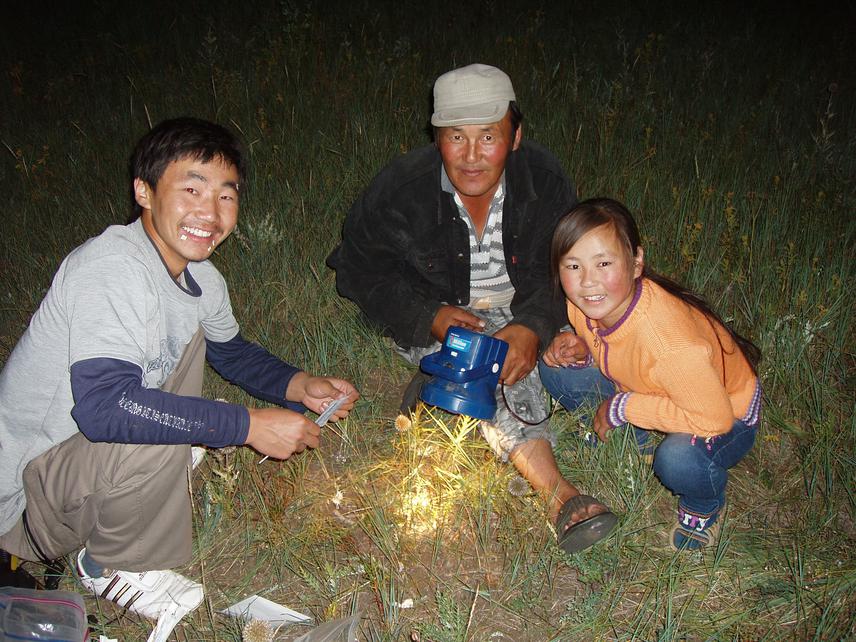Aimee Kessler
Other projects
The aim of the project is to work within local communities to determine the best conservation practices for endangered populations of Asian Great Bustard (Otis tarda dybowskii).

Feather collection.
The Great Bustard, the heaviest bird capable of flight, serves as an indicator and flagship species for steppe conservation projects. Only 2000 individuals of the Asian subspecies (Otis tarda dybowskii) are estimated to remain across their range of Mongolia, China, and Russian South Siberia. Mongolia, where our project area is located, is rapidly transitioning from communism to a more open economy. Though issues of land privatization and land-use change, infrastructure development and the settling of a nomadic population all present challenges to conservation, there is also the opportunity for positive change as the nation develops its environmental legislation, agricultural policies, and protected area network. Our team investigates the natural history of poorly understood populations of Great Bustards in Mongolia in order to determine best conservation practices, while working within local communities to raise awareness of this species and develop local scientific capacity.
Specifically, our group monitors the movement patterns of individual Great Bustards using satellite telemetry. Backpack-style transmitters relay GPS positions that allow us to analyze bustards’ habitat use patterns and chart their migration routes. Using these transmitters, we are also able to monitor the birds through multiple years and determine causes of mortality. We collect dropped feathers for population genetic analyses, to determine the degree of isolation of remnant populations. Our team collaborates with and advises local non-governmental organizations on conservation measures for these populations.
Though protected by law, Great Bustards are a target of sports hunting and environmental outreach raises interest and concern for this charismatic species. We work to facilitate environmental education at multiple levels. We carry out environmental education programs at schools and a regional summer camp and use radio interviews to reach a broader audience. We invite local people to participate in our research and learn from their observations of this wary species.
We also assist the career development of young professionals. University students who aspire to careers in conservation and ornithology train with our team, and we support the research and study of a master’s student, whose research focuses on the Great Bustard.